It seems that sewing is a complex and labor-intensive process that only experienced craftswomen can master? This statement is wrong. Sewing with a double needle is not much different from working with a single needle. The main thing is to correctly install the needle, thread it and choose the sewing method. We will tell you in detail how to do this in the article.
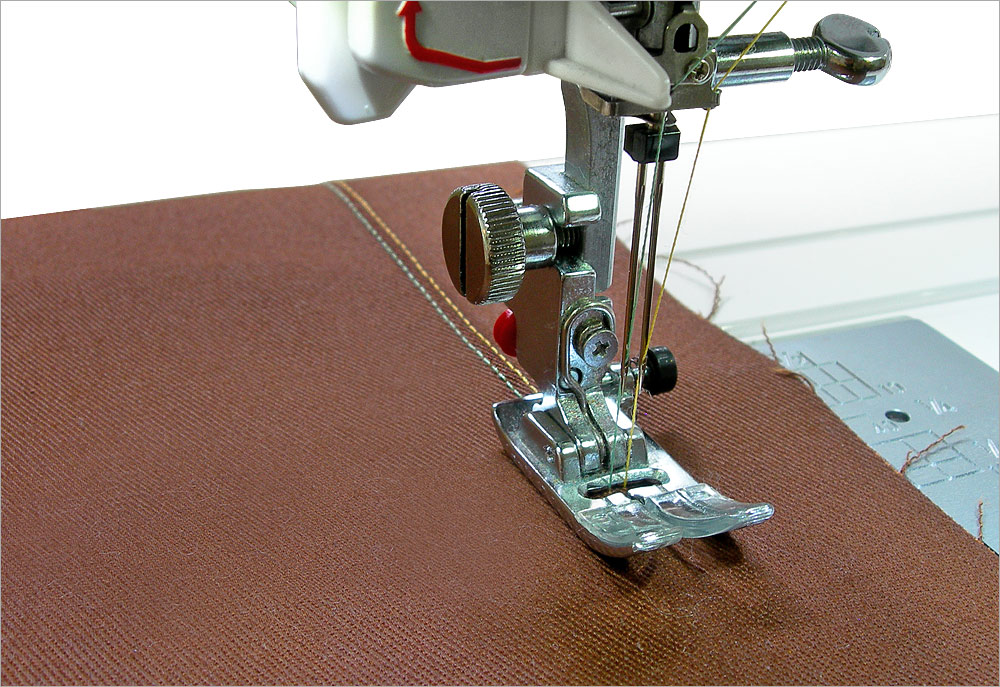
How to sew with a double needle on a sewing machine
If your goal is to learn how to sew professionally, you cannot do without a double needle. This tool looks quite simple. It consists of a base with two needles - a thread is threaded into each of them. Therefore there are also two coils.
Using a double needle, sew both straight and zigzag stitches on the back and front sides of the product.
What are double needles for?
There are many possible uses. Let's note some of them:
- double needle is a good alternative overlock, since with its help you can process and beautifully decorate the edges of the product;
- when processing the edges of knitted fabrics, this tool can replace a flat-stitch machine: the stitching will be absolutely even, without pulling the fabric;
- This needle is convenient for sewing denim;
- if you use multi-colored threads, you can create interesting embroidery using double stitching;
- This needle is ideal for sewing on braid and decorative ribbons.
- sewing quilts is another use case.
Kinds
At first glance, it seems that this instrument looks very simple and there cannot be any classifications here. But experienced seamstresses know: there are several types of double needles.
The most common universal needle. You can use it to sew any fabric. However, it is most often used when working with silk, chiffon, and cotton. Threads - natural and synthetic. The packaging of such needles is marked “Universal”.
A less common option is a tool with a rounded tip, which is ideal for working with stretch materials or when sewing together parts of knitted items. This needle works as carefully as possible and does not pull on the delicate fibers of capricious fabrics. You can find it by the “Stretch” marking.
A needle marked “Metallic” is used when working with metallized threads. Another type is a thick needle marked “Jeans”, suitable for sewing items made from thick fabrics and jeans.
An important criterion is the distance between the needles. For example, the smallest size is 1.5 mm, and the largest is 6 mm. When choosing a needle according to this criterion, you should understand what thickness of material you will have to work with. The thinner it is, the smaller the distance between the needles.
By the way! When creating decorative elements, the distance between the needles also matters. The larger it is, the more voluminous the line appears.
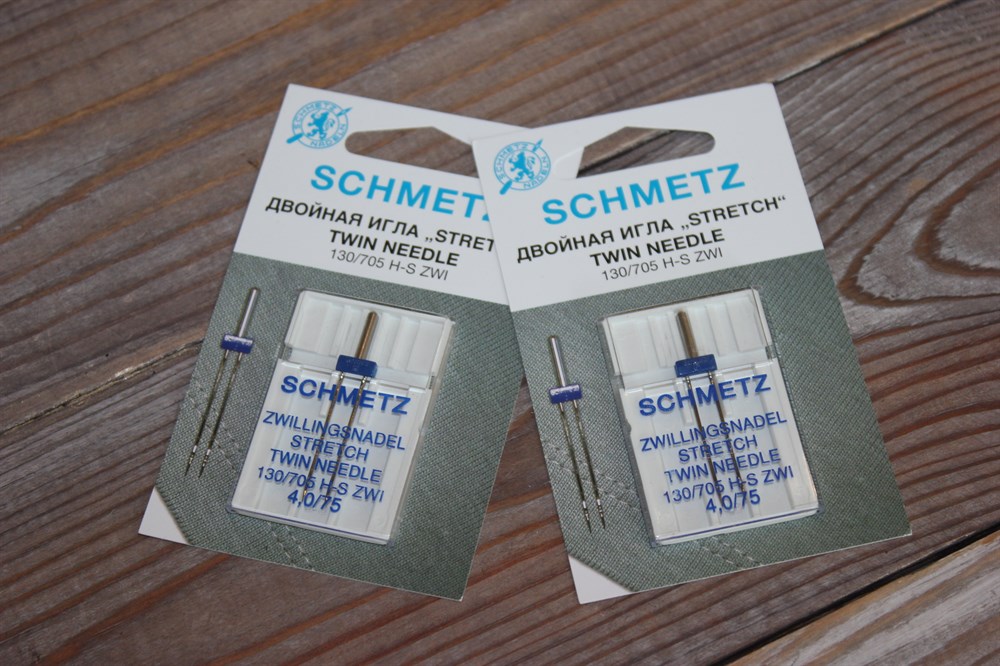
Installation recommendations
Working with such an accessory is only possible on machines that sew a zigzag stitch.
Installing a double needle is easy. It is placed in such a way that the cut “looks” back (from the seamstress’s face), and the round side looks forward (towards the face). The threads are passed through all the tensioners, as in the case of a single needle. In this case, the right thread passes through the eye of the right needle, and the left thread through the eye of the left.
Important! After threading, pay attention to the seam switch and set it to straight stitch mode.
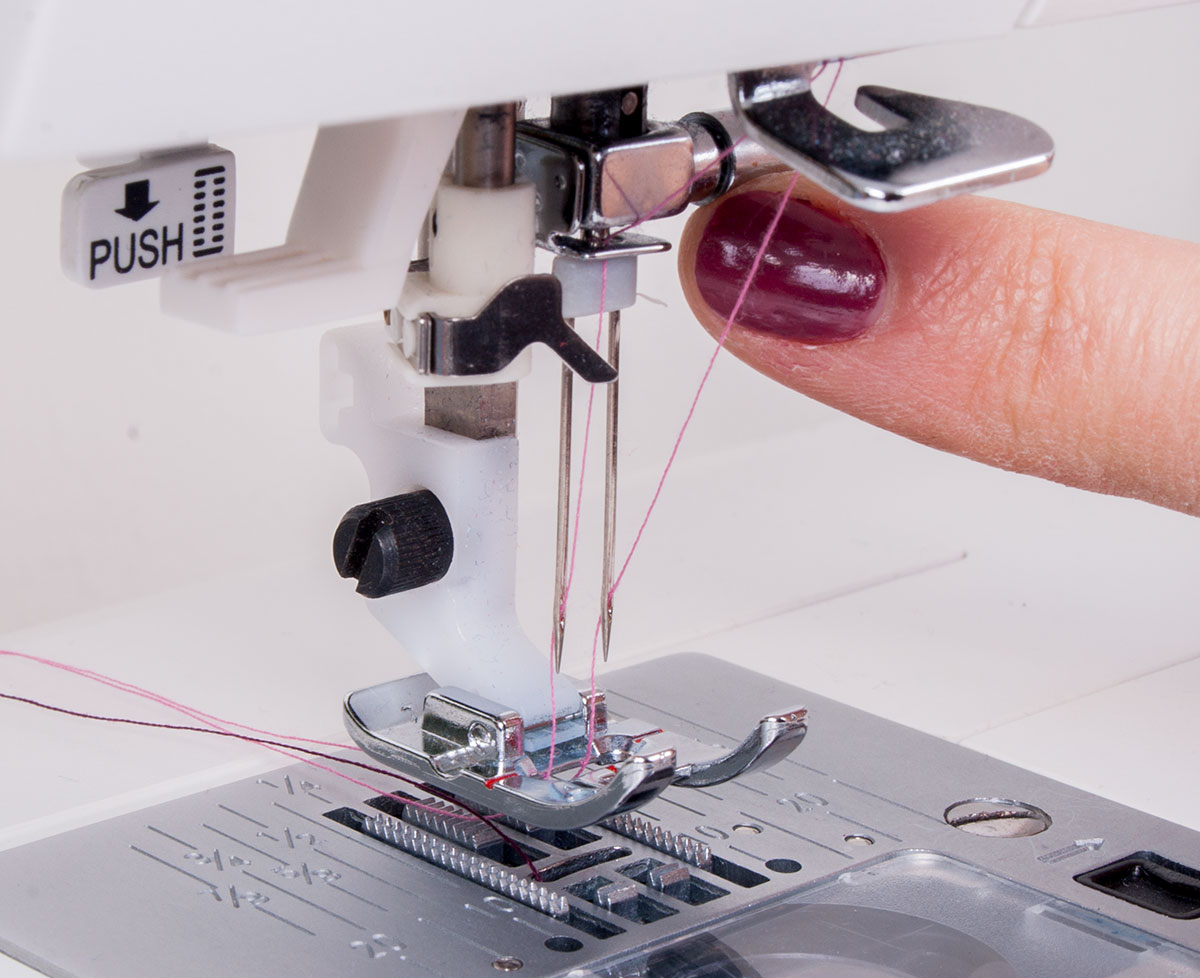
Sewing methods
So, the threads are stretched and threaded into the eyes of the needles, the parts of the product are ready. So, you can start sewing.
The operating algorithm is as follows:
- Place the parts of the product under the raised foot, turn the wheel a little (so that the needle pierces the material).
- Pull the threads (approximately 8-10 cm) away from you.
- Lower the presser foot and start sewing. It is important to constantly monitor how the stitching is going so that the material lies evenly, as well as the level of thread tension.
- When the stitching is finished, you need to raise the foot and pull out the product along with the threads (their length is no more than 10-15 cm).
- Next you need to cut the threads and tie knots.
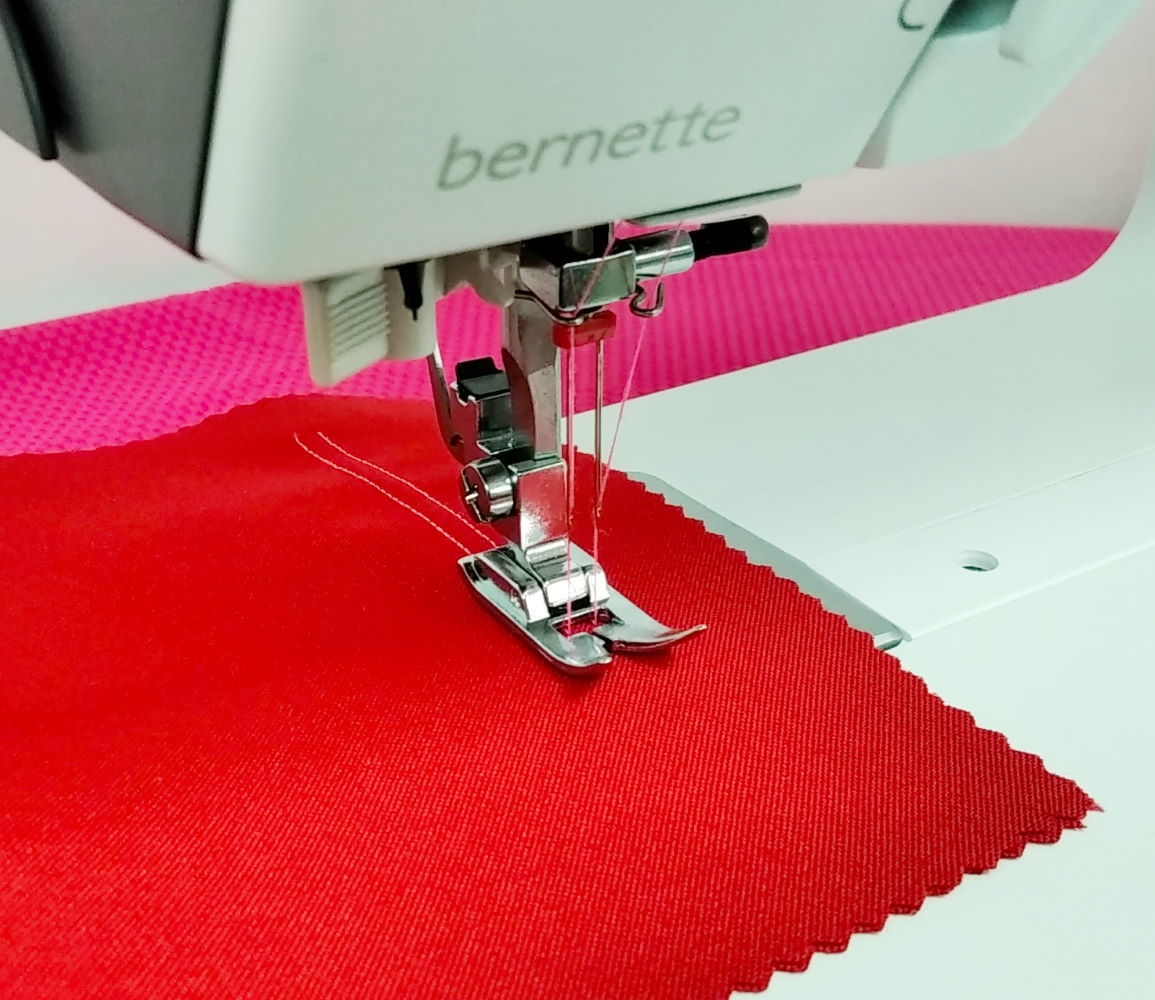
@janome.in.ua
Safety precautions during operation
Sewing on a machine requires compliance with certain rules. This work only seems safe, but in reality it is quite easy to get injured.
For example, a prerequisite for the first sewing with a double needle is familiarity with the instructions. You need to read the operating instructions for the machine (if there are any) and study the information indicated on the packaging with the needles (as a rule, you can always find technical specifications there).
There are other, no less important rules:
- Always count how many needles you have taken out of the package before you begin. If at the end of sewing there are fewer of them, then you need to carefully examine the space next to you. Perhaps a few pieces fell accidentally.
- Hide packages of needles from children, even if you have not opened them yet.
- Do not use broken tools. If the needle is damaged and there is no new one, it is better to postpone sewing. Otherwise, there is a high risk of not only ruining the product, but also breaking the machine or getting hurt.
Common mistakes
To make sewing a pleasure, it is important not only to set up the machine correctly, thread the threads and follow safety precautions, you must take into account the mistakes that most craftswomen make.
For example, when purchasing needle many people don't look at their size. And this is a very important criterion. If the needle does not match the thickness of the threads and the fabric, the product can be ruined. With this approach, it is impossible to achieve even and neat lines.
Another common mistake that novice seamstresses make is failure to follow the sequence before starting work. Such negligence threatens to tangle the threads, and sometimes break the machine. First you need to place the product under the foot, then insert a needle into the fabric, remove the threads, and only after that you can lower the foot and sew. At the same time, it is important to watch your own hands: do not put your fingers under the needle when the presser foot is raised up. It is not safe.
The wheel needs to be turned away from you. Many people also forget about this rule, as well as about test sewing. Remember: in any business, rehearsal is important. Practice on a scrap scrap. If the stitching turns out beautiful, and the machine does not twitch during operation, the thread tension is optimal, which means you can start working on the main product.


 0
0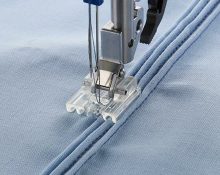
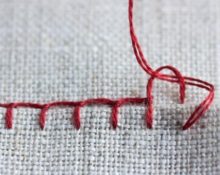
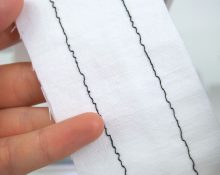
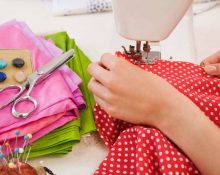
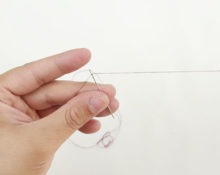
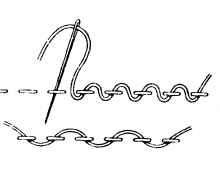

Good afternoon Can I use sewing machine needles for overlocking?
Yes, since most models use needles that are designed for sewing machines. The main thing is that they match the numbers.
Good afternoon You write that the wheel must be turned away from you. Why and what does this give?
In no case “FROM MYSELF”. The wheel is only on you - counterclockwise! Grief is a teacher.
All my life I knew that I could only turn the wheel towards myself.